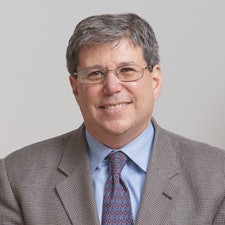A new report by the City University of New York (CUNY) highlights a complicated narrative about equality in New York City. Overall citywide levels of inequality improved slightly compared to the 2015 baseline, with positive and negative results across certain areas.
The report was produced by Equality Indicators, a project of CUNY’s Institute for State and Local Governance that began in 2014 to study and track the progress in reducing local inequalities regarding education, economy, health housing, justice and services across the city. This is the fourth annual report published by the project which is funded by The Rockefeller Foundation.
The report gave New York City an equality score of 48.52 out of 100, an increase of 3.56 from the city’s 2015 score of 45.07. The score for 2018 noted that disadvantaged groups continue to be almost twice as likely as those not disadvantaged to experience negative outcomes in essential areas of life, the report said.
 Dr. Michael Jacobson
Dr. Michael JacobsonThe report also found that the largest positive change was in city services, with a 7.31 point increase; followed by education, a 6.31 increase; health, a 3.88 increase; and justice, a 2.38 increase. The scores for housing and the economy was relatively unchanged from the baseline year, with a positive increase of 0.94 and 0.06 points, respectively.
“We saw the greatest improvement in equality in the topics of Arts & Culture, Early Education, Access to Health Care, and Neighborhood. Conversely, we saw negative changes in scores for the topics of Safety & Victimization, Essential Needs and Services, Affordable Housing, and High School Education,” Dr. Michael Jacobson, founding executive director for the CUNY Institute for State and Local Governance wrote in the report. “Quality of Health Care continues to be the lowest scoring topic (meaning the greatest inequalities) across the entire Equality Indicator framework, while Parks & Recreation had the highest score (most equality) across the entire framework.”
Dr. Victoria Lawson, project director of Equality Indicators said she believes the shift in attitudes and awareness of all races, sexualities and gender in NYC is a result of a greater awareness of these types of disparities nationally.
“For different reasons, they’ve all been in the public consciousness,” she said. “New York is an incredibly diverse city and one that has a lot of activism, so I think these issues really resonate with people here,” she added.
 Dr. Victoria Lawson
Dr. Victoria LawsonEvery year since the projects start, Equality Indicators surveys about 3,000 New Yorkers to determine what they believe to be the biggest inequality issue that exists in the city.
Lawson told Diverse she’s always interested in how it seems that there is a disconnect between what the data shows and what people’s perceptions are from looking at the survey results.
“Every year, the lowest score out of all the areas we look at is for health,” she said. “But one of the things we ask people in our public survey is to tell us the biggest inequality facing New Yorkers, and the biggest responses are around housing and economic inequality; almost no one says health. So here we have these massive disparities, but people aren’t recognizing them or perhaps are not recognizing that they’re as big an inequality issue as they are.”
According to the report, Whites are the racial group that’s most likely to report a lack of diversity in government out of all racial groups in NYC (41.9 percent), compared to 40.7 percent of Blacks – a positive change from results in recent years. This finding shows an increase of awareness of low amount of diverse representation in government among all ethnic groups.
In addition, New Yorkers who identify as heterosexual were more likely to own a home (almost 33 percent) than individuals that identify in the LGBTQ community, with almost 17 percent who were homeowners in 2018.
With regard to health insurance, almost 9 percent of Hispanics in the city were uninsured, followed by African-Americans at 6.3 percent, Whites at 5.4 percent and Asians as the least likely to be uninsured at almost 5 percent, the report found.
“Our goal is to make sure the most vulnerable in our society are not forgotten, and to ensure that we do not lose sight of where they continue to be left behind,” the authors of the report wrote. “Only by continuing to monitor progress will we be able to do so.”
Monica Levitan can be reached at [email protected]. You can follow her on Twitter @monlevy_.



















